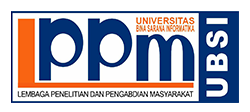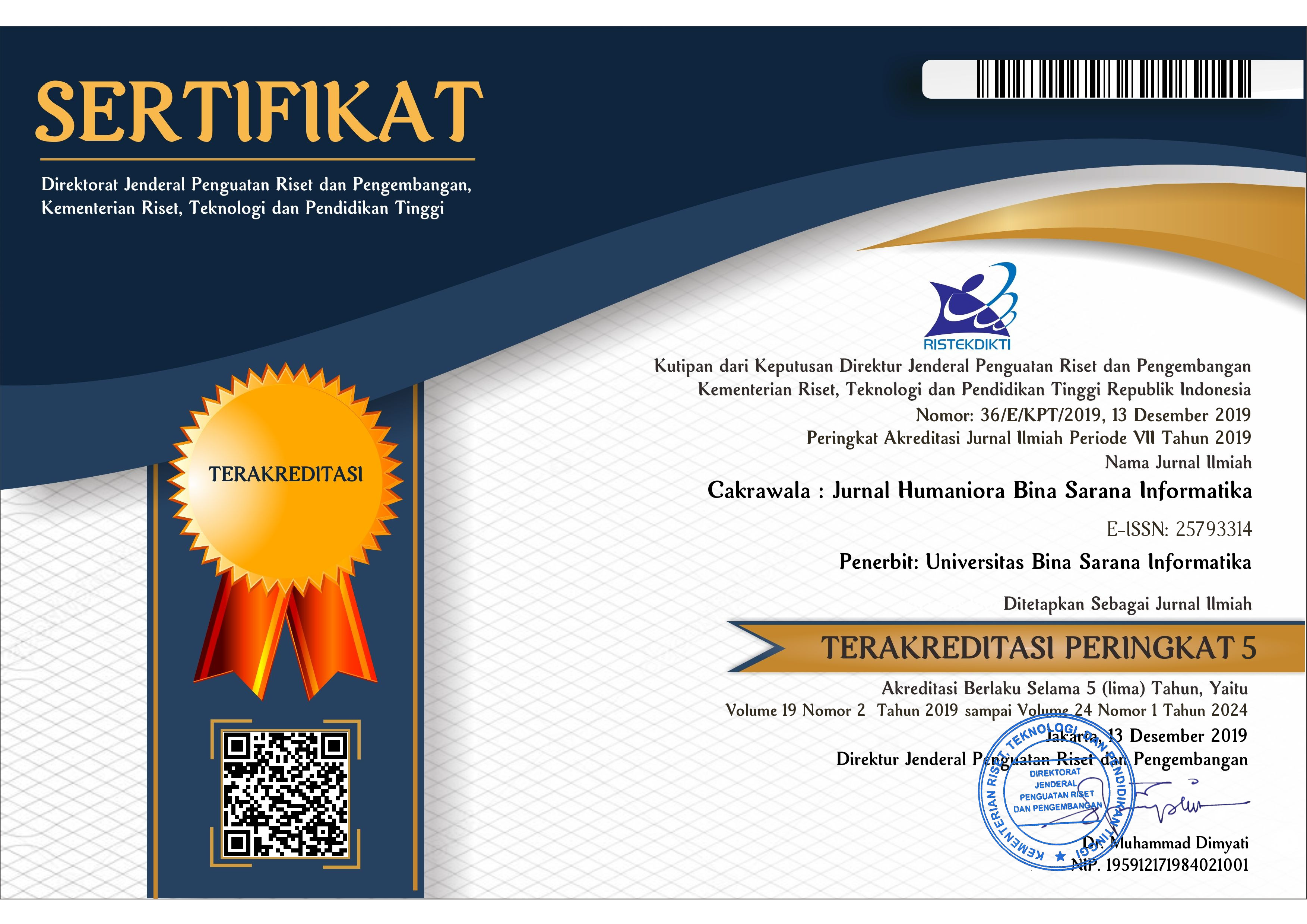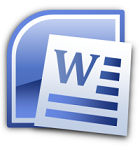Kajian Estetika Warna Papan Tanda Informasi Pada Restoran Tuttonero di Jakarta Barat
Abstract
Public space is a container that can accommodate certain activities of the community. This space is a space that is used for transitional activities from the main activities which are usually shaped like a lounge in shops, cafes, and so on. The purpose of the study of the characteristics of information signboards for cafe & restaurant public spaces (case study: West Jakarta) is to provide a description & description through aesthetic studies of the color of information signs found in public spaces of cafes & restaurants located in West Jakarta & its surroundings through color psychology. . The color aesthetic approach is based on the function and influence of color on the emotional atmosphere of visitors. This research method uses qualitative research methods through a phenomenological approach. The phenomenological approach deals with an understanding of how everyday life is, which aims to interpret social action as meaningful and can reconstruct a meaning. The conclusion obtained is based on the phenomenological approach, that the results of this study are the meaning of the white and black colors used on the Tuttonero restaurant information sign board, namely that white reflects light and is considered the color of summer, while the meaning of black is elite, elegant, charming , strong and humble. Therefore, this study recommends further research related to the application of information signboards into public spaces, so that the results will be useful for producers and users of facilities in public spaces of cafes & restaurants.
Full Text:
PDFReferences
Bungin, Burhan. Penelitian Kualitatif. Edisi kedua. Jakarta: Kencana. 2011
Endaswara, Suwardi. Metode, Teori, Teknik Penelitian Kebudayaan. Pustaka Widyatama. 2006.
Irawan, Bambang & Tamara, Priscilla, Dasar- dasar Desain (untuk arsitektur, interior-arsitektur, seni rupa, desain produk industri dan desain komunikasi visual), Jakarta: Griya Kreasi, 2013
Julius Panero, Martin Zelnik, Dimensi Manusia dan Ruang Interior (Jakarta: Erlangga, 2003) Joedawinata, HDII, Ahadiat. Applied Aesthetics, Diktat Kuliah Magister Desain Produk, Jakarta: Pasca Sarjana Universitas Trisakti. 2014.
Manuaba, I.B.A. 1998. Dengan Desain yang Aman Mencegah Kecelakaan dan Cedera. Bunga Rampai Ergonomi. Volume 1. Denpasar: Program Studi Ergonomi - Fisiologi Kerja. Denpasar: Universitas Udayana.
Moleong, Lexi J..Metodologi Penelitian Kualitatif. Bandung: Remaja Rosda Karya. 2000.
Marswa, W. Restoran dan segala Permasalahannya. Edisi 4. Yogyakarta : Andi, 2005.
Nugroho, Sarwo, Manajemen Warna dan Desain, Penerbit ANDI, Yogyakarta, 2015
Palgudani, Bram. Desain Produk 2, Analisis dan Konsep Desain. Bandung: Penerbit ITB. 2008.
Sachari, Agus. Estetika - Makna, Simbol dan Daya. Cetakan ke 3. Bandung: Penerbit ITB. 2006.
Semiawan, Conny R.. Metode Penelitian Kualitatif. Jakarta: PT Grasindo. 2010.
Sihombing, Danton. Tipografi dalam Desain Grafis. Edisi diperbaharui. Jakarta : PT. Gramedia Pustaka Utama, 2015.
SULISTYADI, Kohar, Perancangan Sistem Kerja dan Ergonomi, Publisher: Jakarta Universitas Sahid, 2003
Swasty, Wirania, A-Z Warna Interior Rumah Tinggal, Griya Kreasi: Depok
Wicaksono, A. Andie & Tisnawati Endah. Teori Interior. Cetakan I. Jakarta : Griya Kreasi, 2014.
DOI: https://doi.org/10.31294/jc.v20i2.9100
ISSN: 2579-3314


Dipublikasikan oleh LPPM Universitas Bina Sarana Informatika
Jl. Kramat Raya No.98, Kwitang, Kec. Senen, Kota Jakarta Pusat, DKI Jakarta 10450

This work is licensed under a Creative Commons Attribution-ShareAlike 4.0 International License









